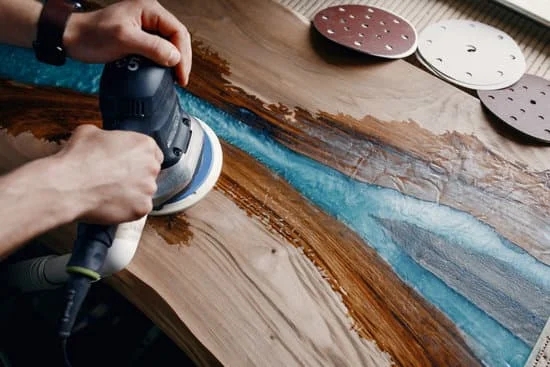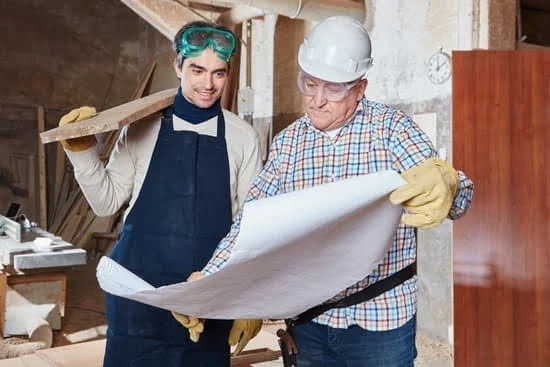Accurate measurements are crucial in woodworking to ensure precision and perfect results. Knowing how to measure for woodworking projects is the foundation of every successful creation. Without proper measurements, even the most skilled craftsman may end up with flawed pieces that do not fit together as intended.
In this article, we will delve into the significance of precise measurements in woodworking and why it is essential for every woodworker to master this skill. We will explore the various measurement tools available for woodworking projects and provide a step-by-step guide on how to properly use a tape measure, which is a staple tool in any woodshop.
From understanding common mistakes to avoiding them when taking measurements, to tips for achieving precision cuts and marking wood for joinery, we will cover it all. Additionally, the importance of double-checking measurements and tools and techniques for measuring angles in woodworking will be discussed in detail. By the end of this article, you will have a comprehensive understanding of how to measure effectively in woodworking for flawless results.
Understanding the Different Measurement Tools for Woodworking Projects
Woodworking projects often require precise measurements to ensure the final product turns out as intended. Understanding the different measurement tools available is crucial for achieving accuracy in your woodworking projects. Some of the most common measurement tools used in woodworking include tape measures, rulers, squares, calipers, and protractors.
One of the most basic yet essential measurement tools for woodworking is the tape measure. Tape measures come in various lengths, but a standard 25-foot tape measure is typically sufficient for most woodworking projects. When using a tape measure, it’s important to ensure that it is locked securely in place before taking measurements to avoid any inaccuracies.
Another commonly used measurement tool in woodworking is the combination square. This versatile tool consists of a ruler and a sliding head that can be adjusted to different angles for marking or checking perpendicular lines. Combination squares are handy for ensuring precise 90-degree angles when cutting or assembling wood pieces.
Calipers are precision measuring tools that come in both digital and analog forms. They are useful for measuring small dimensions accurately, such as thickness or diameters of wood pieces. Using calipers can help woodworkers achieve consistency and uniformity in their projects by ensuring each piece meets the required dimensions accurately.
| Measurement Tool | Function |
|---|---|
| Tape Measure | Mainly used for linear measurements |
| Combination Square | Helps with marking or checking perpendicular lines |
| Calipers | Precision tool for measuring small dimensions accurately |
Step-by-Step Guide on How to Use a Tape Measure Correctly
Accurate measurements are crucial in woodworking to ensure precision and quality in your projects. One of the most essential tools for measuring in woodworking is a tape measure. Knowing how to properly use a tape measure is key to achieving accurate results in your woodworking endeavors.
Here is a step-by-step guide on how to use a tape measure correctly for woodworking projects:
- Begin by choosing a high-quality tape measure with clear and easy-to-read markings. A retractable tape measure is typically the most convenient option for woodworking as it allows for single-handed operation.
- To take an accurate measurement, hook the end of the tape firmly onto one end of the piece you are measuring. Make sure there is no slack in the tape to avoid inaccuracies.
- Extend the tape along the length of the wood or material you are measuring, ensuring that it stays straight and flat against the surface without any twists or bends. Take note of where the measurement line falls on the tape for precise readings.
- When making cuts or marks based on your measurements, always double-check them to prevent costly mistakes and rework.
By following these steps and practicing consistently, you can improve your skills in measuring accurately for woodworking projects and achieve professional-looking results every time.
Common Mistakes to Avoid When Taking Measurements for Woodworking
When it comes to woodworking, one of the most crucial aspects is ensuring accurate measurements. Even the smallest error in measurement can result in a piece that doesn’t fit properly or joints that are misaligned. To avoid these common mistakes and achieve precision in your woodworking projects, it is important to understand how to measure for woodworking correctly.
Here are some common mistakes that woodworkers often make when taking measurements and how to avoid them:
1. Eyeballing measurements: One of the biggest mistakes beginners make is relying on their eyesight to estimate measurements. This can lead to inaccuracies and inconsistencies in your cuts. Instead, always use a measuring tool such as a tape measure or ruler for precise measurements.
2. Ignoring the grain direction: When measuring for cuts, it’s important to consider the grain direction of the wood. Cutting against the grain can result in splintering and rough edges. Always measure and mark your cuts with the grain for cleaner results.
3. Not double-checking measurements: Another common mistake is failing to double-check your measurements before making cuts. Always measure twice and cut once to ensure accuracy in your woodworking projects.
By being mindful of these common mistakes and following proper measurement techniques, you can ensure that your woodworking projects turn out beautifully crafted and accurately assembled. Remember, precision in measurement is key to achieving flawless results in woodworking.
Tips for Measuring for Precision Cuts in Woodworking
Precision cuts are crucial in woodworking projects, as they can significantly impact the overall quality and aesthetics of the final piece. To achieve accurate and precise cuts, it is essential to start with proper measurements. Whether you are working on a simple DIY project or a complex piece of furniture, mastering the art of measuring for precision cuts is key. Here are some tips to help you ensure accurate measurements for your woodworking projects.
Use the Right Tools
One of the fundamental aspects of measuring for precision cuts in woodworking is using the right tools. Invest in high-quality measuring tools such as a tape measure, combination square, and calipers to ensure accuracy. A tape measure is ideal for longer length measurements, while a combination square can help in marking straight lines and checking for squareness. Calipers are handy when you need to take extremely precise measurements, especially for intricate joinery work.
Measure Twice, Cut Once
The age-old adage “measure twice, cut once” holds true in woodworking. Taking the extra time to double-check your measurements before making any cuts can save you from costly mistakes and rework later on. Ensure that your measurements are consistent and that all dimensions are accurately recorded before proceeding with any cutting tasks.
Paying Attention to Grain Direction
When measuring for precision cuts in woodworking, it’s crucial to consider the grain direction of the wood. Cutting against the grain can result in tearout and splintering, affecting the overall finish of your project. Always mark your measurements with arrows indicating the direction of the grain to ensure clean and smooth cuts. By paying attention to grain direction during measurement, you can achieve cleaner edges and better overall results in your woodworking projects.
By following these tips for measuring precision cuts in woodworking projects, you can enhance the quality and accuracy of your work. Remember that taking precise measurements is a foundational skill that can make a significant difference in the outcome of your woodworking projects. Mastering this aspect of woodworking will not only improve your craftsmanship but also ensure that each piece you create meets professional standards.
How to Measure and Mark Wood for Joinery
Accurate measurements are crucial in woodworking, especially when it comes to joinery. Joinery involves creating strong and precise connections between pieces of wood, which can only be achieved through meticulous measuring and marking. In this section, we will delve into the importance of measuring and marking for joinery work, as well as provide step-by-step guidance on how to do so effectively.
Measuring Tools for Joinery
Before diving into the process of measuring and marking wood for joinery, it’s essential to ensure you have the right tools at your disposal. The most common tools used for this purpose include a tape measure, combination square, sliding bevel gauge, and marking knife. These tools are essential for ensuring accuracy and consistency in your measurements.
Step-by-Step Guide on How to Measure and Mark Wood for Joinery
- Begin by selecting the pieces of wood you will be joining together.
- Use a tape measure to measure the required length or width of each piece, making sure to account for any additional allowances needed for the joint.
- Transfer these measurements onto the wood using a pencil or marking knife.
- Use a combination square or sliding bevel gauge to ensure that your markings are straight and square.
- Double-check your measurements before making any cuts or joining the pieces together to avoid costly mistakes.
Common Mistakes to Avoid
When measuring and marking wood for joinery, some common mistakes can lead to inaccurate results. Avoiding these errors is crucial for achieving tight-fitting joints and professional-looking woodworking projects:
- Incorrectly reading or using measurement tools
- Failing to account for allowances in joinery
- Making hasty measurements without double-checking them
By being mindful of these potential pitfalls, you can improve your accuracy and precision in woodworking joinery.
Importance of Double Checking Measurements in Woodworking
When it comes to woodworking, accuracy is key. Even the smallest miscalculation can lead to errors that can ruin a project. This is why double-checking your measurements is crucial in woodworking. No matter how experienced you are, taking the time to verify your measurements can save you from costly mistakes and ensure that your work turns out as planned.
One of the best ways to double-check your measurements in woodworking is to measure twice, cut once. This old adage may seem simple, but it highlights the importance of being thorough in your measuring process before making any cuts or adjustments. Taking the extra time to confirm your measurements can prevent wasted materials and time spent on corrections later on.
In addition to measuring twice, using multiple measurement tools can also help you confirm the accuracy of your dimensions. While a tape measure is commonly used in woodworking, combining it with a combination square or a ruler can provide you with different perspectives on the same measurement. This cross-verification technique can catch any discrepancies and ensure that your project stays true to its intended dimensions.
| Importance of Double Checking Measurements | Benefits |
|---|---|
| Ensures accuracy | Prevents mistakes |
| Saves time and materials | Provides confidence in measurements |
Tools and Techniques for Measuring Angles in Woodworking
Measuring angles accurately is crucial in woodworking to ensure precision and achieve the desired outcome in your project. There are various tools and techniques available to help woodworkers measure angles effectively. One of the most common tools used for measuring angles is a protractor. A protractor is a semicircular tool with degree markings that allows you to measure angles between two lines or surfaces accurately.
In addition to using a protractor, another helpful tool for measuring angles in woodworking is a bevel gauge. A bevel gauge is a handheld tool that consists of a handle and an adjustable blade that can be set to specific angles. It is especially useful for transferring and replicating angles onto your workpiece. Bevel gauges come in various designs, including digital versions that provide precise measurements for intricate woodworking projects.
When measuring angles in woodworking, it is important to ensure that your tools are properly calibrated and securely positioned. Using a combination square can also be useful for checking the accuracy of your angle measurements. By aligning the square against the edge of your workpiece, you can verify if the angle matches your desired measurement before making any cuts or joinery decisions.
By mastering the tools and techniques for measuring angles in woodworking, you can elevate the quality of your projects and achieve more professional results. Taking the time to accurately measure angles will not only improve the aesthetic appeal of your work but also enhance its structural integrity. With practice and attention to detail, you can confidently tackle angled cuts and joinery tasks in woodworking projects with precision and confidence.
Conclusion
Mastering the art of measurement in woodworking is essential for achieving perfect results in your projects. Precision is key when it comes to woodworking, and accurate measurements play a crucial role in ensuring that everything fits together seamlessly. By understanding the different measurement tools available and how to use them properly, you can elevate the quality of your work and avoid costly mistakes.
One of the most important aspects of measuring for woodworking is knowing how to measure and mark wood for joinery. This involves carefully marking out where cuts should be made, ensuring that pieces will fit together snugly. Additionally, double-checking measurements before making any cuts or adjustments is vital to prevent errors that could ruin a project. Taking the time to be diligent in your measurements will save you time and frustration in the long run.
When measuring for precision cuts or angles in woodworking, having the right tools and techniques at your disposal is crucial. From using a reliable tape measure correctly to employing specialized tools for measuring angles, each step contributes to the overall accuracy of your work.
Remember that practice makes perfect, so don’t be discouraged if you make mistakes along the way. With dedication and attention to detail, you can hone your skills in measurement and achieve flawless results in your woodworking endeavors.
Frequently Asked Questions
How Do You Measure Precisely in Woodworking?
In woodworking, precise measurement is crucial for ensuring the accuracy and quality of the final product. One common method is using a tape measure or a ruler to measure the dimensions of the wood pieces. It’s important to use a measuring tool with clear markings and make sure to align it properly for accurate measurements.
How Do You Measure Wood for Beginners?
For beginners in woodworking, measuring wood accurately can be challenging but essential. A good starting point is to familiarize oneself with basic measuring tools like a tape measure or a combination square. Learning how to read measurements correctly and practice measuring different wood pieces will help beginners improve their skills over time.
What Is the Most Accurate Tape Measure for Woodworking?
When it comes to choosing the most accurate tape measure for woodworking, professionals often prefer ones with fine markings and easy-to-read increments. The durability and reliability of the tape measure are also crucial factors to consider, as they ensure consistent accuracy over time.
Brands like Stanley, Milwaukee, or Lufkin are known for producing high-quality tape measures that are popular among woodworkers for their precision and performance.

Hi everyone! I’m a woodworker and blogger, and this is my woodworking blog. In my blog, I share tips and tricks for woodworkers of all skill levels, as well as project ideas that you can try yourself.





